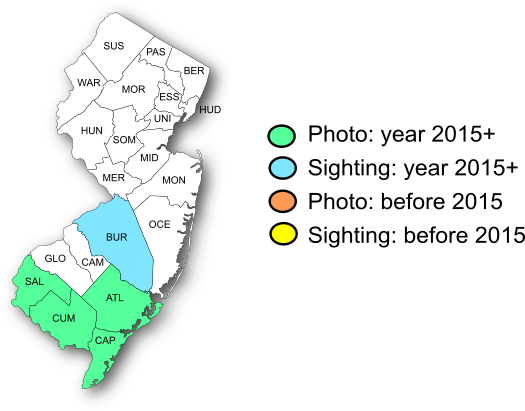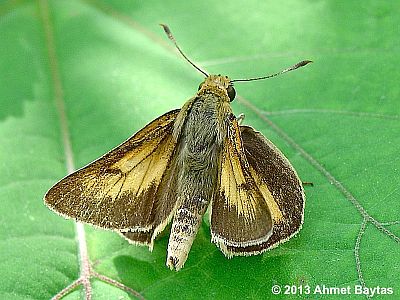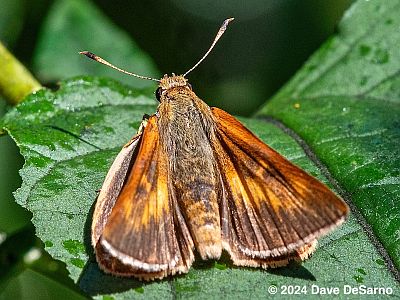New Jersey Butterfly Club
A chapter of the North American Butterfly Association (NABA)
Rare Skipper
Problema bulenta
Identification: Small (but large for a grass-skipper, especially the female)—FW ≥0.7". Sexes similar below. Above: Male FW bright orange with very broad, blackish-brown trailing border, and a, angled, dark cell-end bar. HW has central orange patch with surrounding dark borders, narrower than those on FW. Female FW has much less orange than male's, with two dark, oval patches separated by a narrow orange patch; the outermost dark patch barely touches the trailing border. HW similar to male's. Both sexes may show narrow pale rings on abdomen. Below: Both wings are unmarked yellow-orange and have grayish fringes. Male's FW cell-end bar sometimes partially visible when wings are folded. Similar skippers: Delaware is noticeably smaller, is brighter orange below, and has conspicuous black veining above. Male's cell-end bar usually not visible from below. Arogos is smaller, duller orange below with pale veins, has pale fringes, and above lacks dark veining and female's large dark FW mark. European is much smaller, and duller orange overall, with very narrow dark borders on upper wings. “Golden” male Sachems have buff wing fringes FW, orange on HW.
NJ Status and Distribution: Classified as Special Concern in NJ. Resident. Locally common from Burlington County south.

Habitat: Restricted to upper areas of fresh/brackish tidal marshes with food plant. Often strays from its marsh habitat to visit nearby gardens.
Flight Period: Late June—early August, with one brood peaking in July. Extreme dates: 6/2—9/9.
Caterpillar Food Plant: Big Cordgrass (Spartina cynosuroides).
Overwintering Stage: Not reported.
Good Locations: Dennis Creek WMA, Eldora Nature Preserve, Pickle Factory.
Comments: Likes to nectar on Buttonbush and Pickerelweed.



